Bún đậu mắm tôm (Vietnamese rice vermicelli, tofu, and shrimp paste) is a dish that might seem daunting, mostly due to the paste’s intense smell. But if you can get over the not-so-good first impression and try it, you’ll understand why it is one of the most well-known treats in Vietnam.
Typically, a serving of bún đậu mắm tôm includes bún (rice vermicelli), đậu (crispy fried tofu), mắm tôm (shrimp paste), thinly sliced pork, and fragrant herbs. This combination of mild and strong-tasting ingredients creates a unique and addicting mouthfeel.
If you are feeling adventurous and eager to try a truly one-of-a-kind dish, today’s recipe is an excellent choice!
How Does Bún Đậu Mắm Tôm Stand Out in Vietnamese Cuisine?
Bún đậu mắm tôm emerged in the early 20th century, likely created by a rural woman in Hanoi. She used basic ingredients like rice vermicelli (bún), fried tofu (đậu), fresh herbs, and fermented shrimp paste (mắm tôm) to make a meal for her family.
This combination was both practical and delicious, and she began selling it from a mobile vendor setup. Nowadays, you can find eateries selling this treat in many big cities all over Vietnam, including its birthplace, Hanoi.
Fermented shrimp paste (mắm tôm) is undoubtedly the biggest highlight here. The paste boasts a distinct aroma and taste, which might be unpleasant if you aren’t used to it. Honestly speaking, not all Vietnamese can put up with mắm tôm’s unique flavor profile.
On the flip side, mắm tôm is one of the most addicting sauces in Vietnamese cuisine once you’ve learned to appreciate its uniqueness. In addition, you won’t consume the dip as is but dilute and flavor it with sugar, kumquat juice, and other spices, which mildens the flavor.
But what if I can’t stand mắm tôm, no matter what? In that case, you can enjoy the dish with diluted fish sauce or soy sauce. Don’t worry; some locals do this as well, so no judgment here!
What Are the Must-Have Tools for Bún Đậu Mắm Tôm?
There are a few kitchen tools you’ll need to make bún đậu mắm tôm at home. Check the list below for more details.
What Are the Basic Ingredients for Bún Đậu Mắm Tôm?
Rice vermicelli, pork belly, tofu, and, of course, fermented shrimp paste are the key ingredients for this Vietnamese delicacy. I’ll also include a simple soy sauce-based dip recipe in case you need an alternative to shrimp paste.
What Are the Step-by-Step Directions for Making Bún Đậu Mắm Tôm?
After you’ve purchased all the required ingredients and tools, it’s time to start cooking! Here is a step-by-step instruction for making bún đậu mắm tôm:
Step 1: Prepare the Ingredients
Wash the pork and vegetables. Set them aside.
Pat the tofu block with paper towels to remove excess moisture. Doing this will prevent oil splattering when you fry the tofu. Next, cut it into bite-sized pieces.
Step 2: Boil the Pork
Add 1 teaspoon of salt to a pot of boiling water and blanch the pork belly and liver for 1 to 2 minutes.
Note
It’s important to blanch the pork belly and liver to remove impurities and reduce their odor.
Add the leek, onion, ginger, and white wine to a new pot of water. Cook the water for 5 minutes to extract the spices’ aromas.
Then, put the pork belly and liver into the pot and boil them for 30 minutes. You should cover the pot to help them cook more thoroughly.
Once cooked, transfer them to an ice bath, which improves their firmness and prevents browning.
Step 3: Fry the Tofu
While waiting for the meat to cook, fry the tofu on another stovetop.
Add some oil to a heated pan. The oil doesn’t need to be too hot, or it’ll splatter once you add the tofu.
When the oil is heated enough, add the tofu piece by piece into the pan.
Fry the tofu over medium-low heat. Gently flip the tofu pieces to cook them evenly on all sides. When they’ve turned golden brown, transfer them onto a plate lined with paper towels to absorb the excess oil.
Step 4: Make the Dipping Sauce
There are two ways that you can go about making the sauce. The first is the traditional mắm tôm dip, and the other is a soy sauce-based alternative for people who don’t like the intense flavor profile of fermented shrimp paste.
Shrimp Paste Dip
Make the shrimp paste dip by mixing:
Then give it a good stir to combine them thoroughly.
Alternative Soy Sauce Dip
Add the Vietnamese scallion and oil garnish to a saucepan. If you don’t have this garnish, add some chopped scallions to heated oil instead. Then, add 0.35 ounces of garlic and fry them until fragrant.
Next, stir in with:
Mix well. Cook the sauce until it boils, then turn off the heat.
Step 5: Slice the Pork Belly and Liver
Thinly slice the pork belly and liver and arrange them on 2 separate plates.
Slice the cucumber to serve on the side.
Step 6: Enjoy the Dish
If you can’t get your hands on some fresh rice vermicelli slabs, cut them into smaller chunks and arrange them on a bowl or a plate. Place the rice vermicelli next to the fried tofu, boiled pork, liver, herbs, and your preferred dipping sauce. Enjoy!
What Are the Best Tips and Variations for Bún Đậu Mắm Tôm?
Here are some tips for making the dish and possible variations that you can try out to level up this recipe.
How to Store Leftover Bún Đậu Mắm Tôm?
If you need to store leftover bún đậu mắm tôm, you should put the components in airtight food containers, then refrigerate them. The rice vermicelli, tofu, and pork will last for about 3 days this way.
However, I do not recommend storing the fermented shrimp paste sauce overnight, as it will spoil rather quickly even when refrigerated. The best option is to toss away the leftover sauce and whip up a new bowl the next time.
If you want to know more about this traditional Vietnamese delicacy, don’t miss out on the commonly asked questions below.
Bún Đậu Mắm Tôm: A Dish You Won’t Forget!
Bún đậu mắm tôm might seem like a real challenge at first, but it’s a dish that you’ll remember forever once you’ve tried it out. So, why don’t you take this chance and experience a truly unique Vietnamese dish!
Have you had bún đậu mắm tôm before? Do you love it, or find the shrimp paste a bit too much? Whatever your thoughts are, please let me know in the comment section!
Also, kindly like and spread this post to other food lovers by sharing it on your social media. Thank you very much!
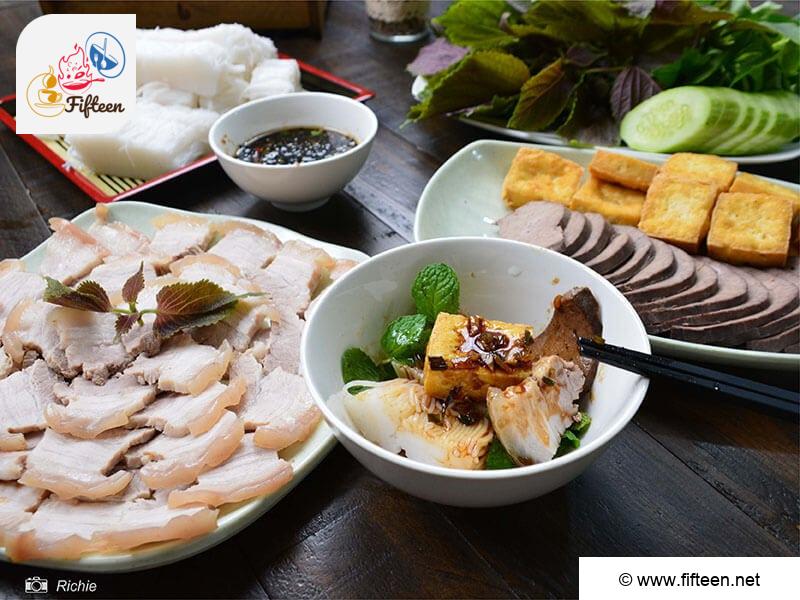
Bún Đậu Mắm Tôm Recipe (Vietnamese Rice Vermicelli, Tofu, and Shrimp Paste)
Equipment
- Pan
- Tongs
- Knife
- Chopping Board
Ingredients
Main ingredients
- 0.7 pounds pork belly
- Pork liver
- Leek
- A few ginger slices
- 1 onion
- 1 tablespoon white wine
- 1 tofu block, raw
- Herbs, for serving: Vietnamese balm, beefsteak plant, peppermint, fish mint.
- 1 cucumber
- 1.8 pounds rice vermicelli
For the shrimp paste dip
- 1.8 ounces shrimp paste
- 5 teaspoons sugar
- 0.5 ounces shallots
- 0.5 ounces garlic
- 0.5 ounces chili pepper
- 2 kumquats
For the alternative dipping sauce
- 5.5 tablespoons soy sauce
- 0.35 ounces garlic, minced
- 5 teaspoons vinegar
- 2 teaspoons sugar
- Chili pepper
- Vietnamese oil and scallion garnish
Instructions
Prepare Tofu and Pork
- Wash the pork and vegetables. Set them aside. Pat the tofu block with paper towels to remove excess moisture. Cut it into bite-sized pieces.
- Add a little salt to a pot of boiling water and blanch the pork belly and liver for 1 to 2 minutes.Add the leek, onion, ginger, and white wine to a new pot of water. Cook the water for 5 minutes to extract the spices' aromas.
- Then, put the pork belly and liver into the pot and boil them for 30 minutes, covering the pot.
- Once cooked, transfer them to an ice bath.
- Add some oil to a heated pan. When the oil is heated enough, add the tofu piece by piece into the pan.
- Fry the tofu over medium-low heat. Gently flip the tofu pieces to cook them evenly on all sides.When they've turned golden brown, transfer them onto a plate lined with paper towels to absorb the excess oil.
Make Shrimp Paste Dip
- Add a little sugar to the shrimp paste and mix well. Then, add the shallots, minced chili pepper, and kumquat juice. Give the sauce a good stir.
Make Alternative Soy Sauce Dip
- Add the Vietnamese scallion and oil garnish to a saucepan. If you don’t have this garnish, add some chopped scallions to heated oil instead. Add the garlic and fry them until fragrant. Stir in the soy sauce, sugar, chili pepper, and vinegar. Mix well. Cook the sauce until it boils, then turn off the heat.
Assemble and Enjoy the Dish
- Thinly slice the pork belly and liver and arrange them on 2 separate plates. Slice the cucumber to serve on the side.
- If you cannot get your hands on some fresh rice vermicelli slabs, cut them into smaller chunks and arrange them on a bowl or a plate.Place the rice vermicelli next to the fried tofu, boiled pork, liver, herbs, and your preferred dipping sauce.Enjoy!
Video
Notes
- The total time is based on 4 servings of bún đậu mắm tôm.
- It’s important that you clean and blanch the pork carefully to get rid of any impurities and odors.
- Besides the two sauces shown above, you can also serve bún đậu mắm tôm with Vietnamese dipping sauce (also called nước chấm) if you like the taste of the fish sauce.
- Chả cốm (green sticky rice patties), chả giò (egg rolls), dồi huyết (Vietnamese hog’s puddings), and nem chua rán (fried fermented pork rolls) are other great side dishes.
- If you want to present this dish most authentically, place all the components in a flat winnowing basket. Put the rice vermicelli in the middle and arrange the pork, fried tofu, etc., around them.


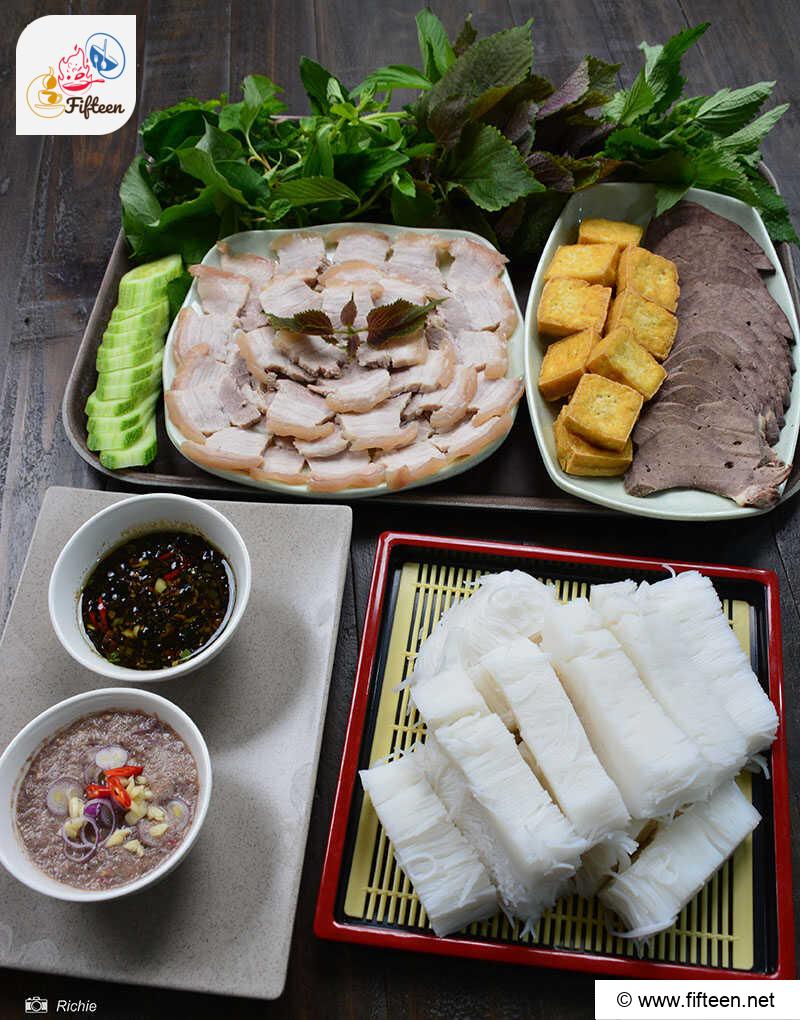
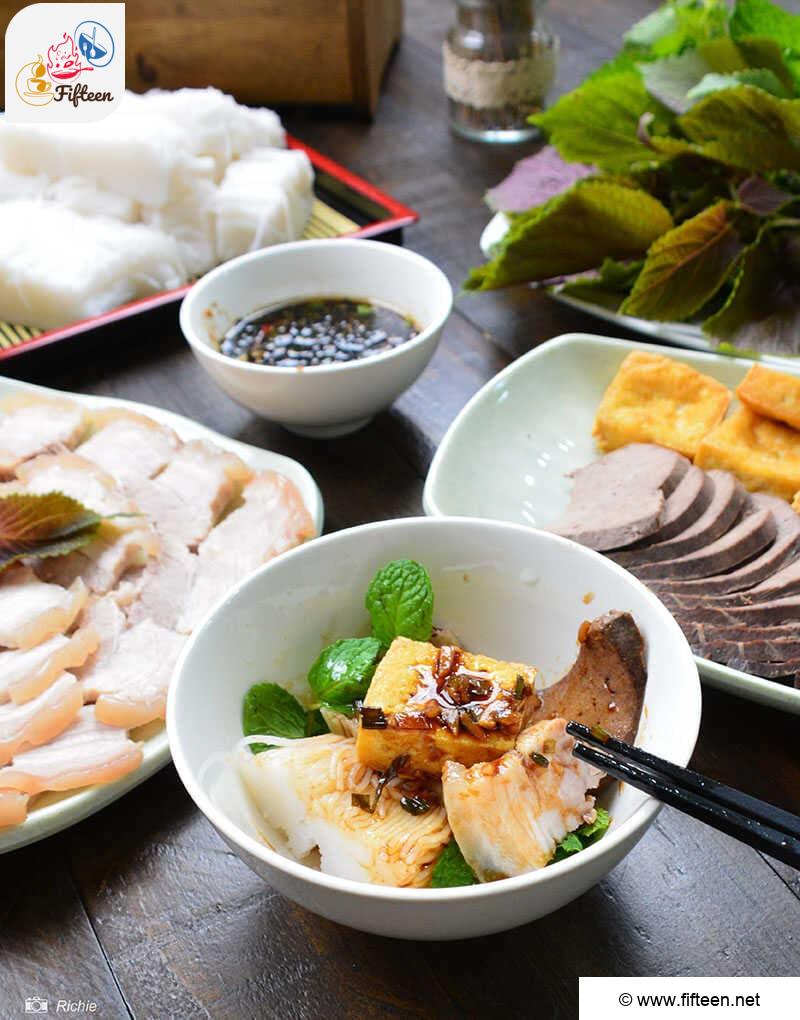
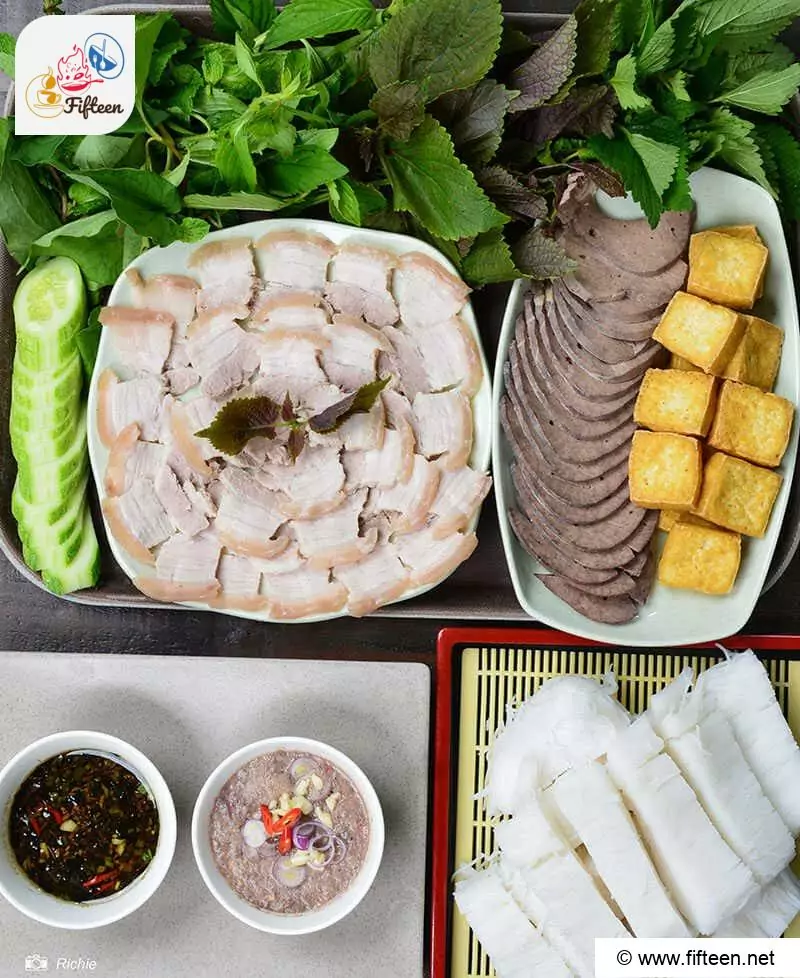
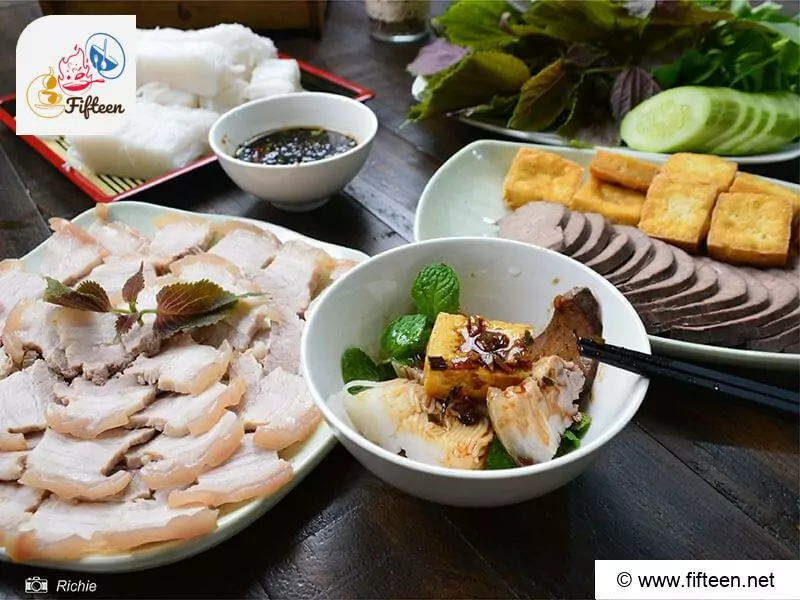
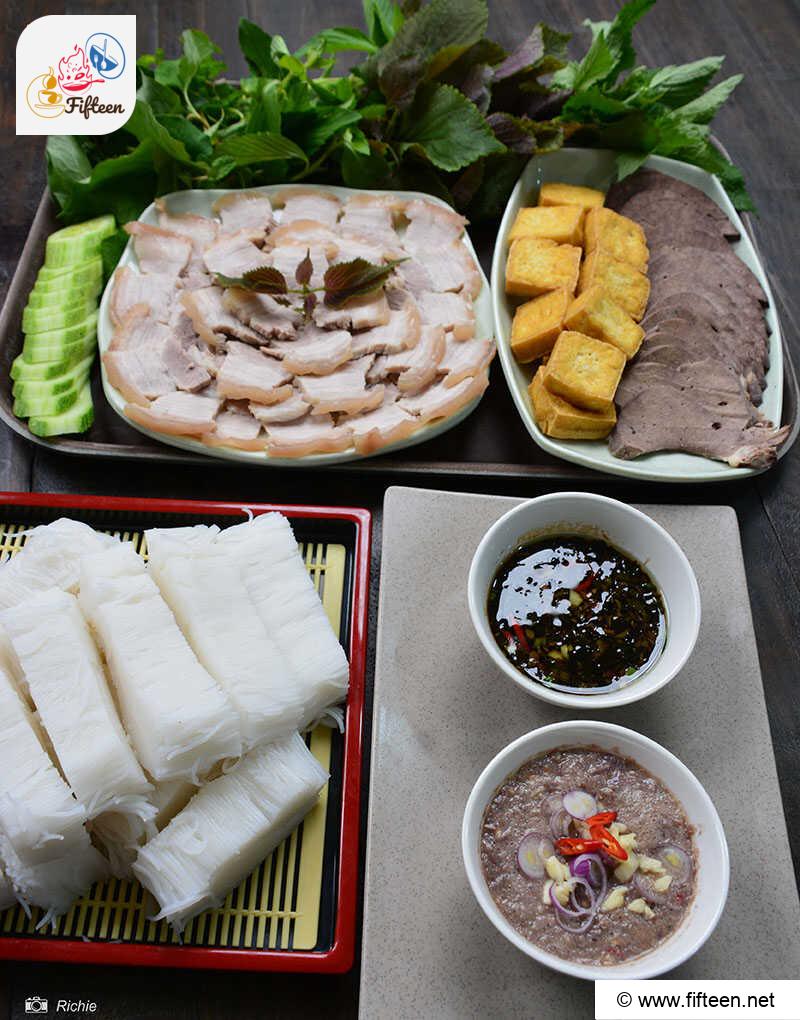
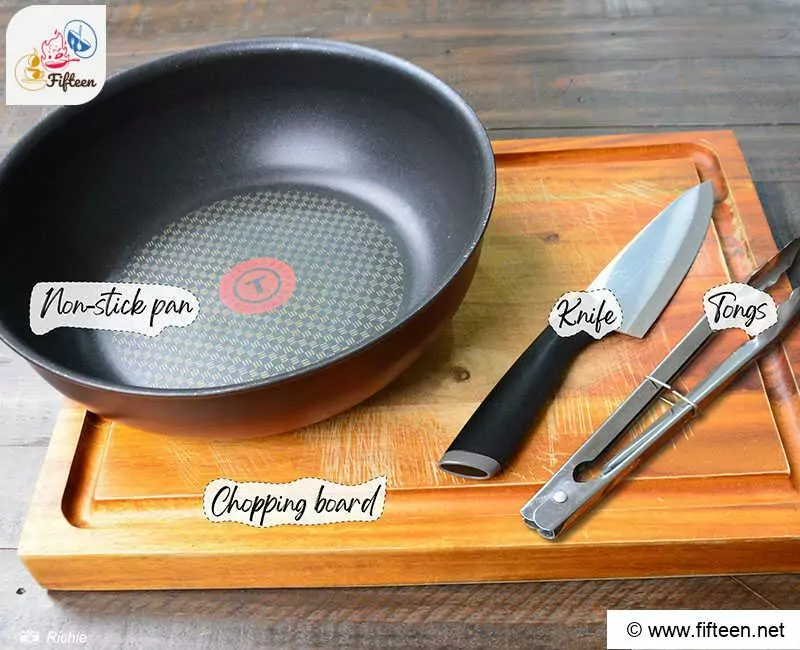
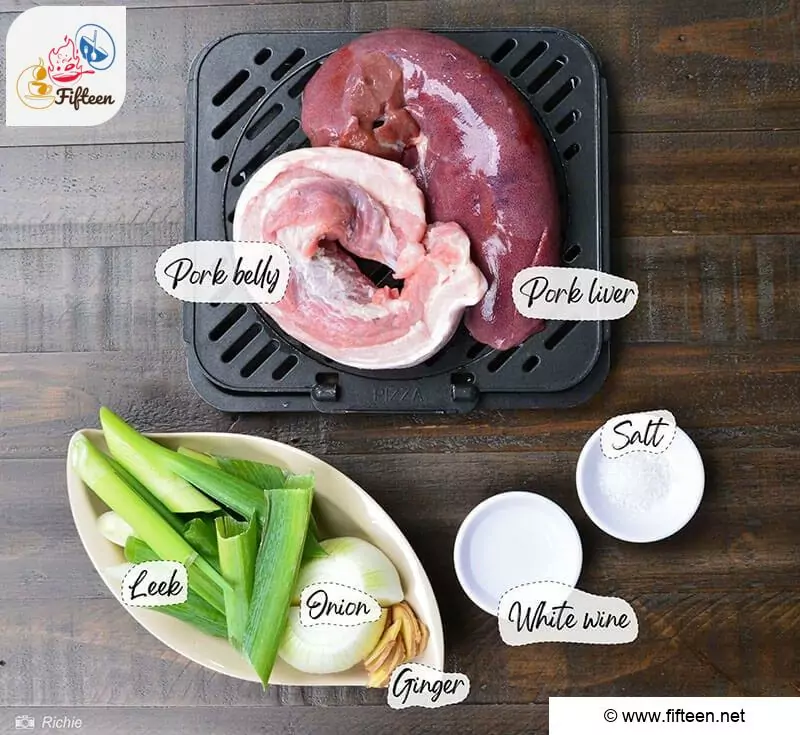
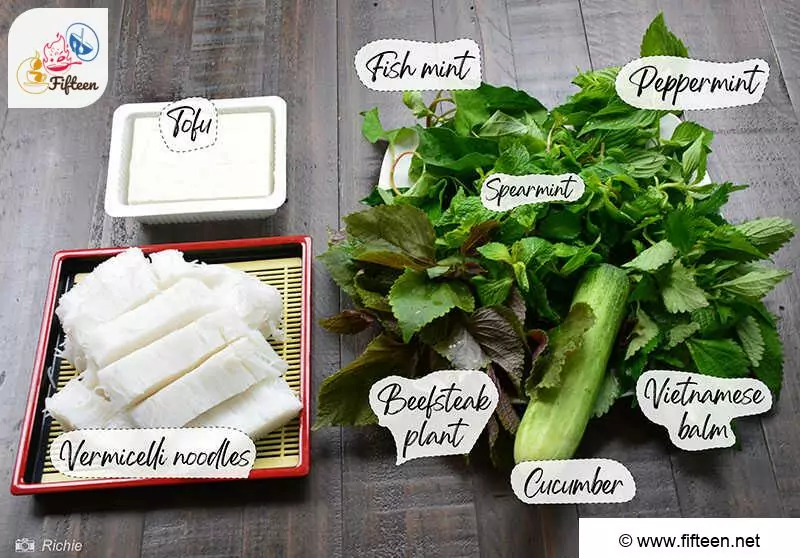
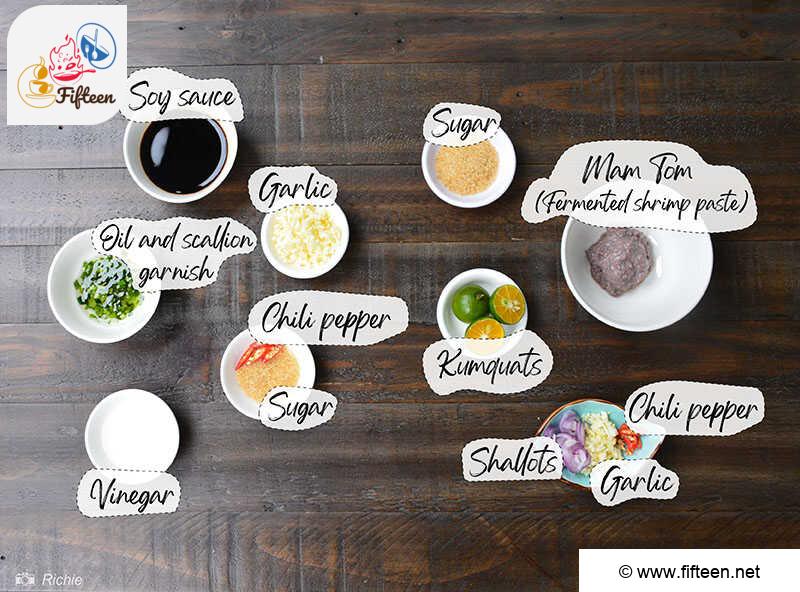
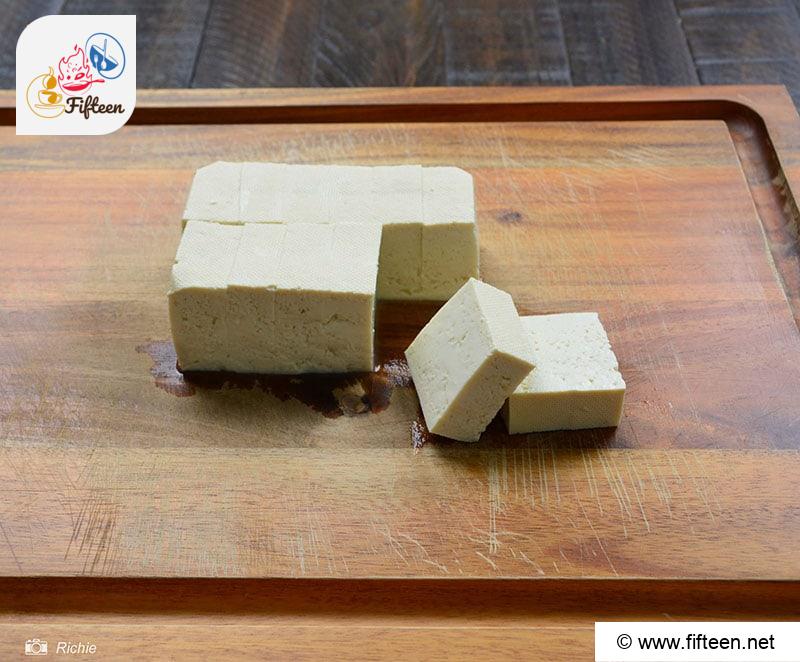
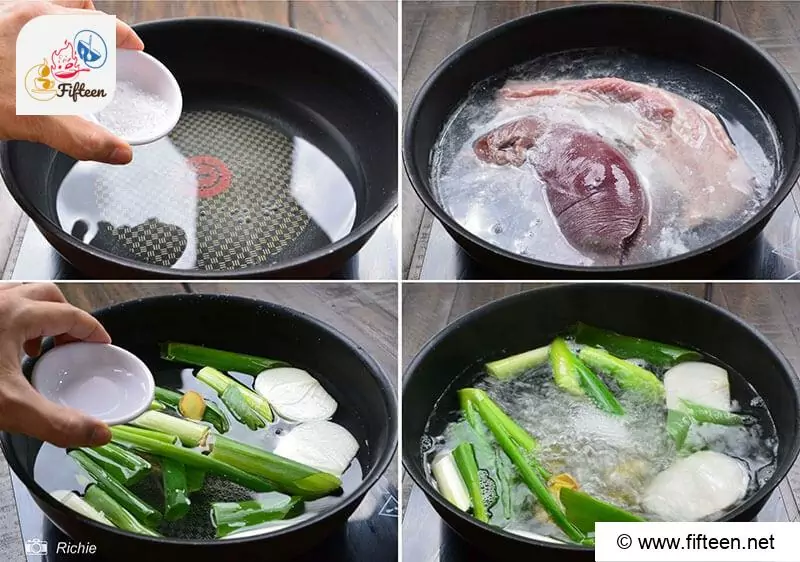
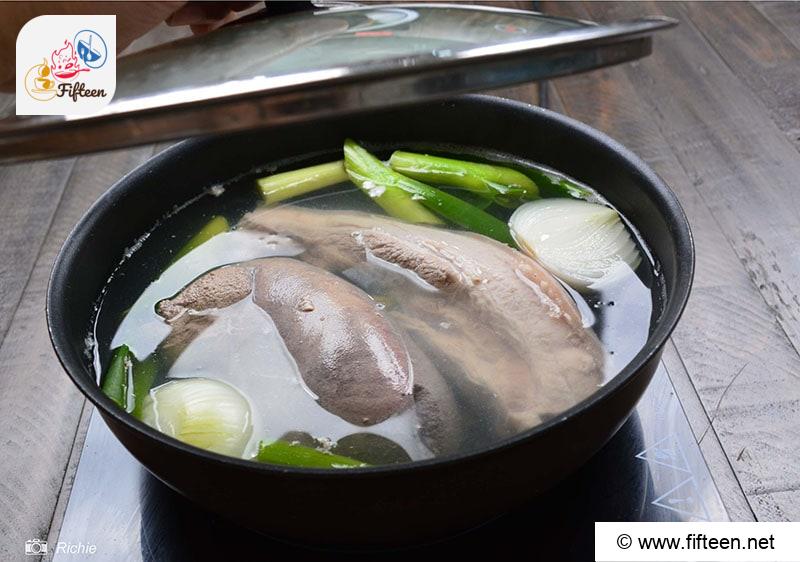
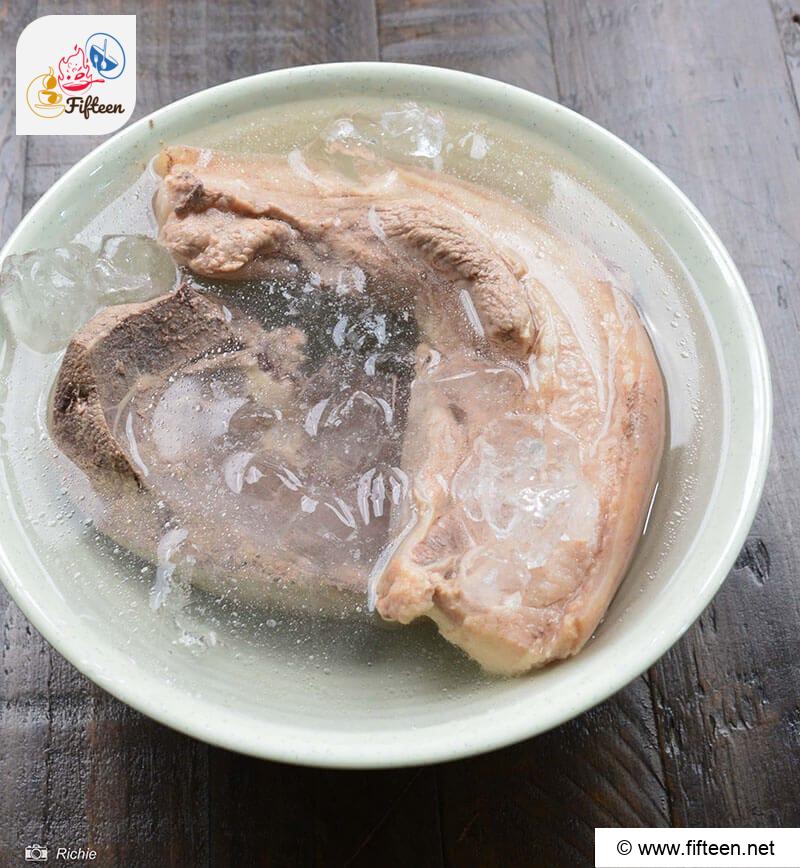
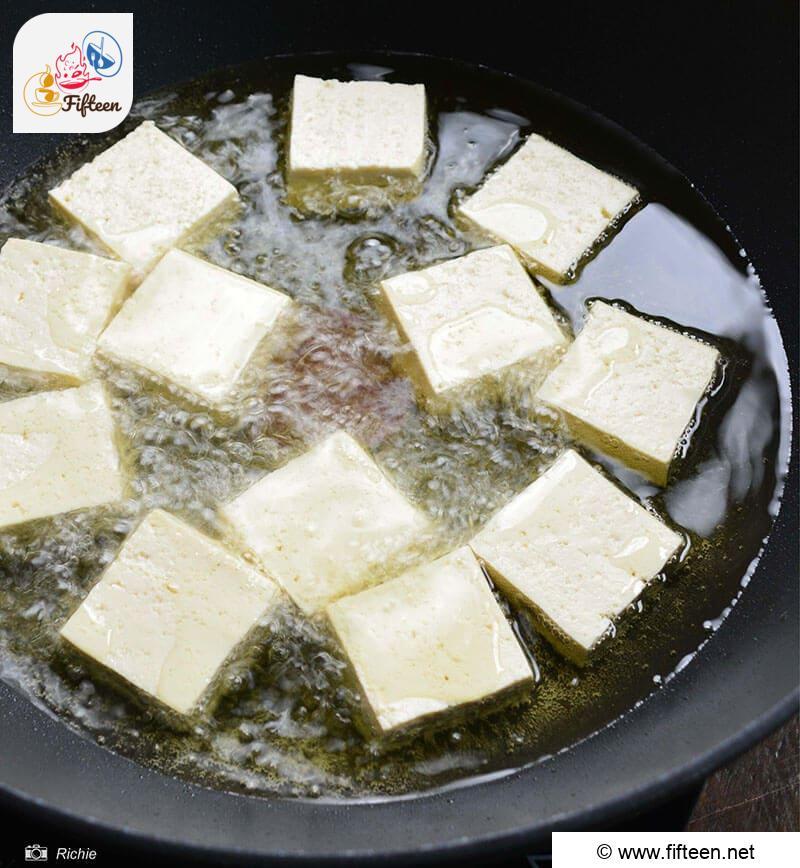
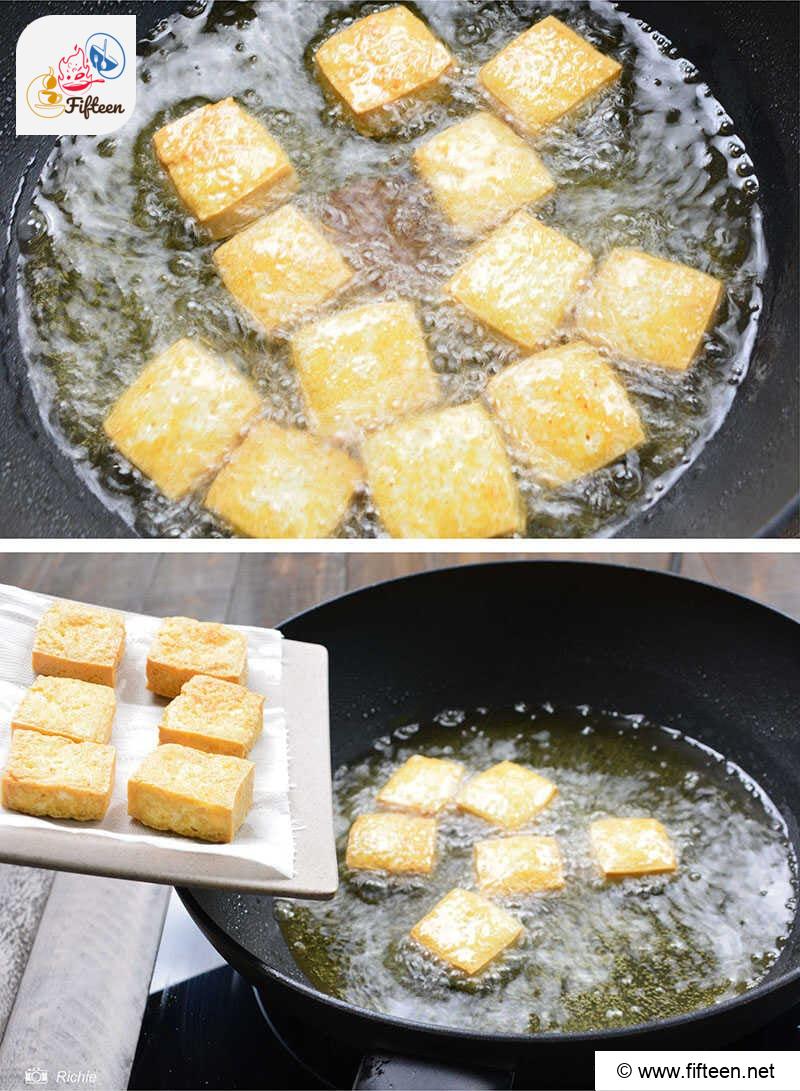
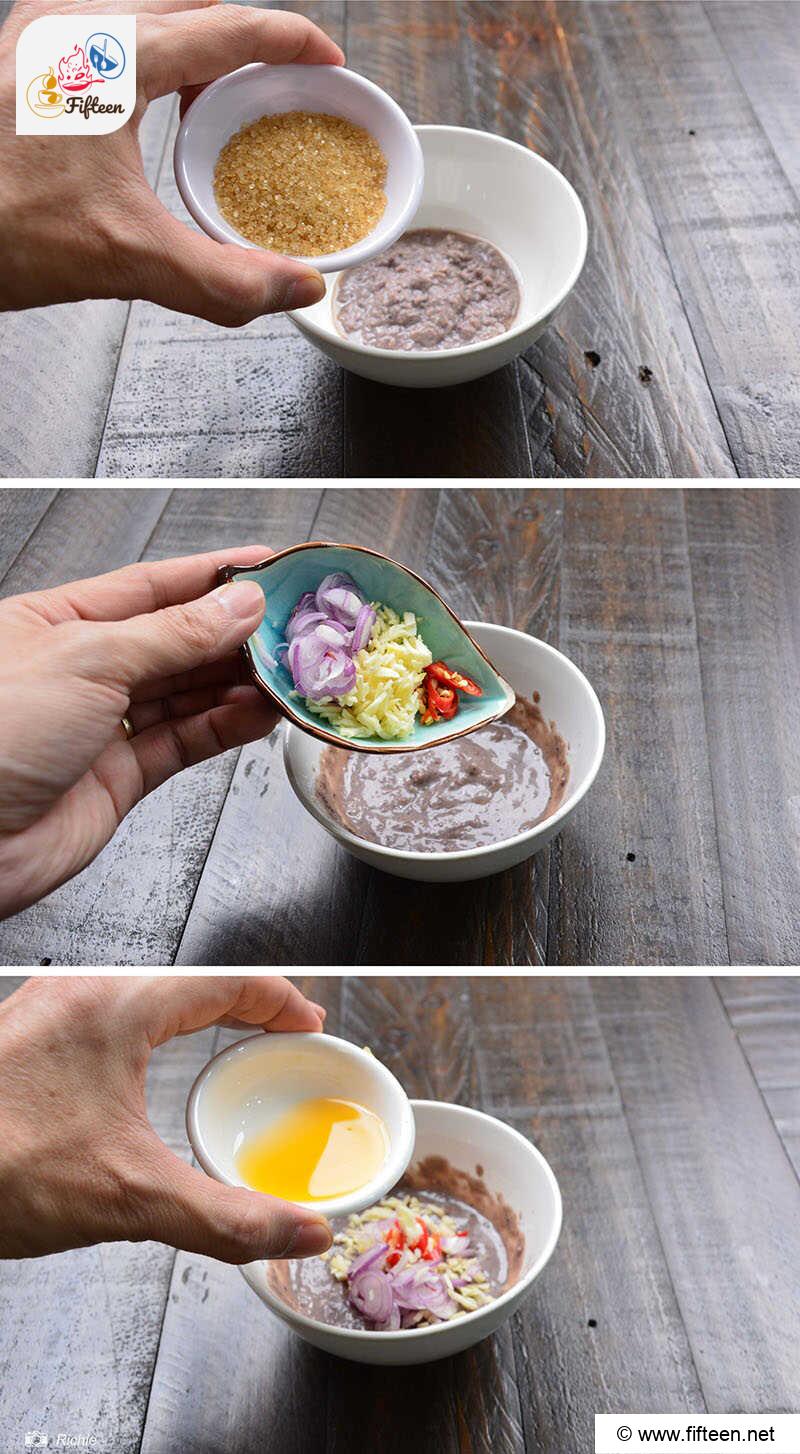
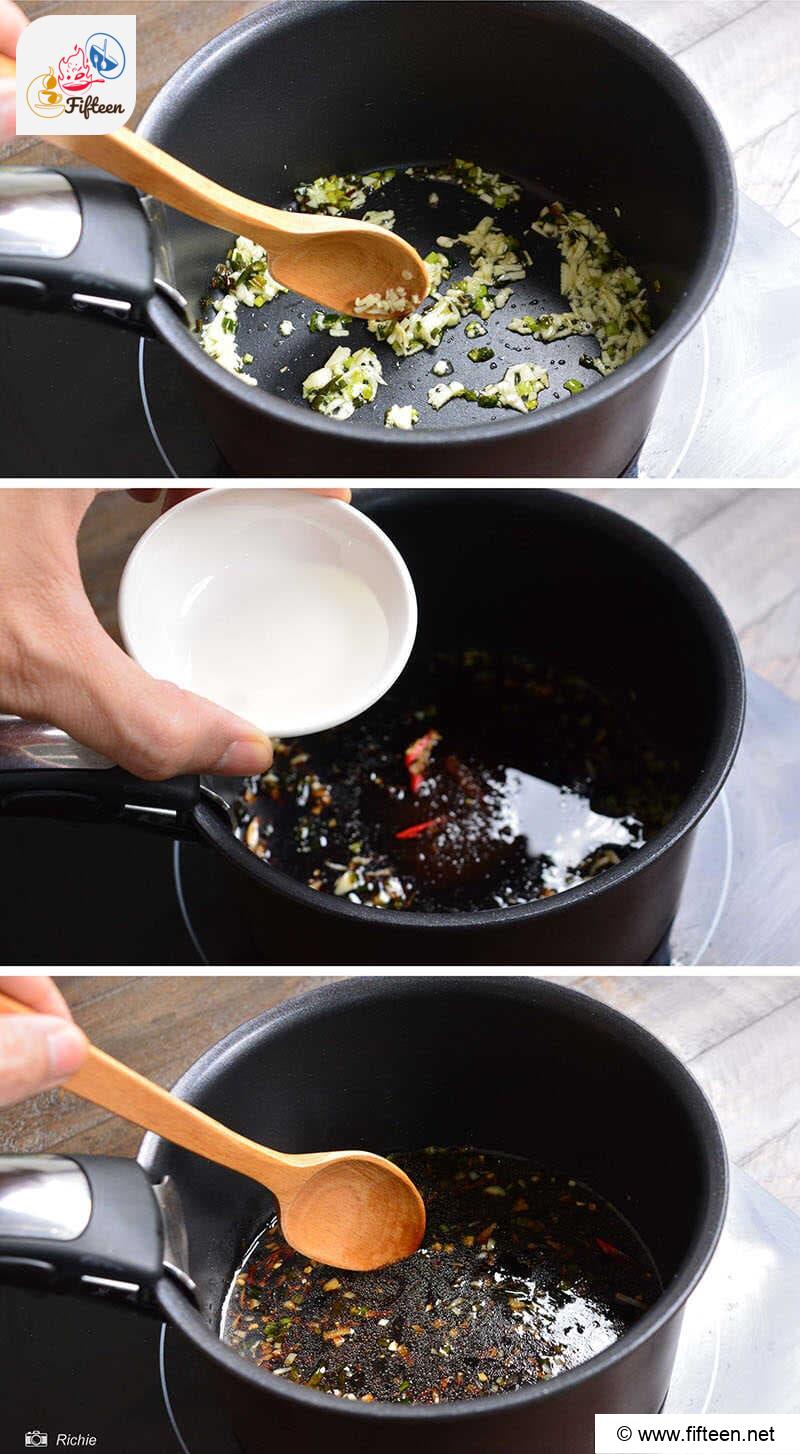
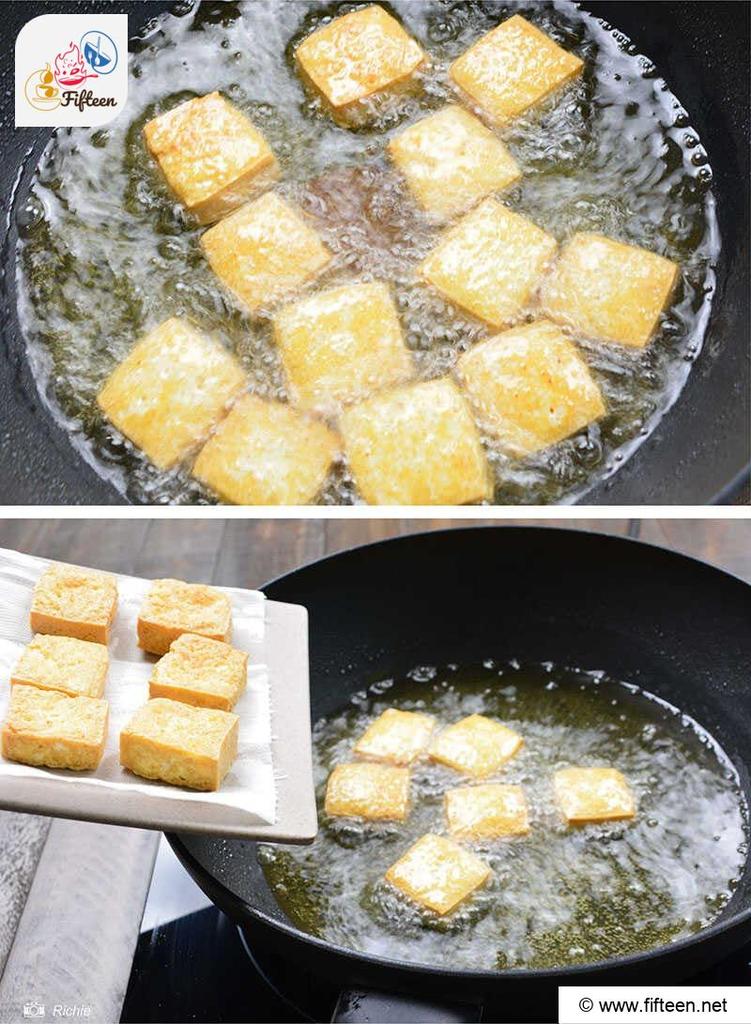
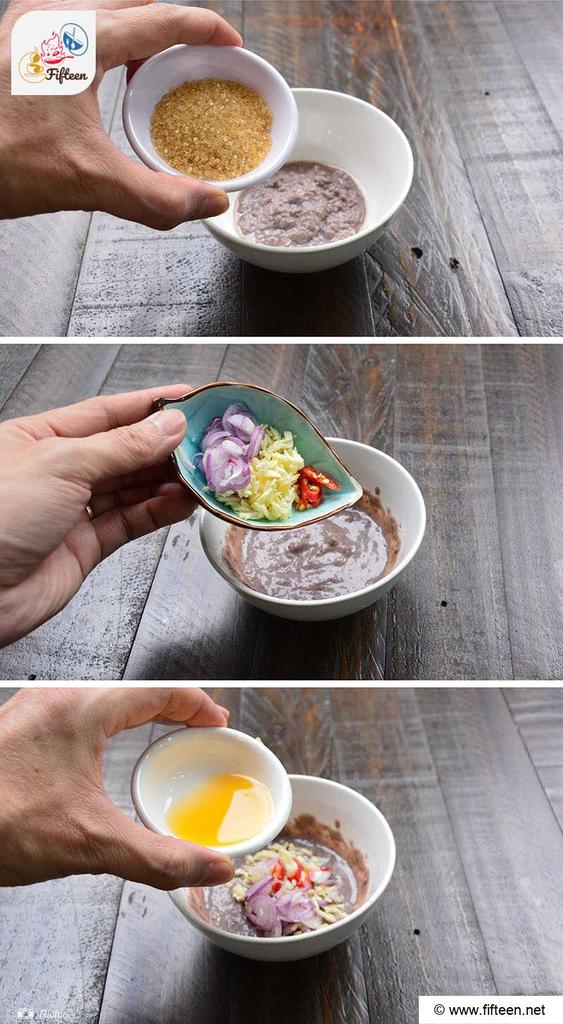
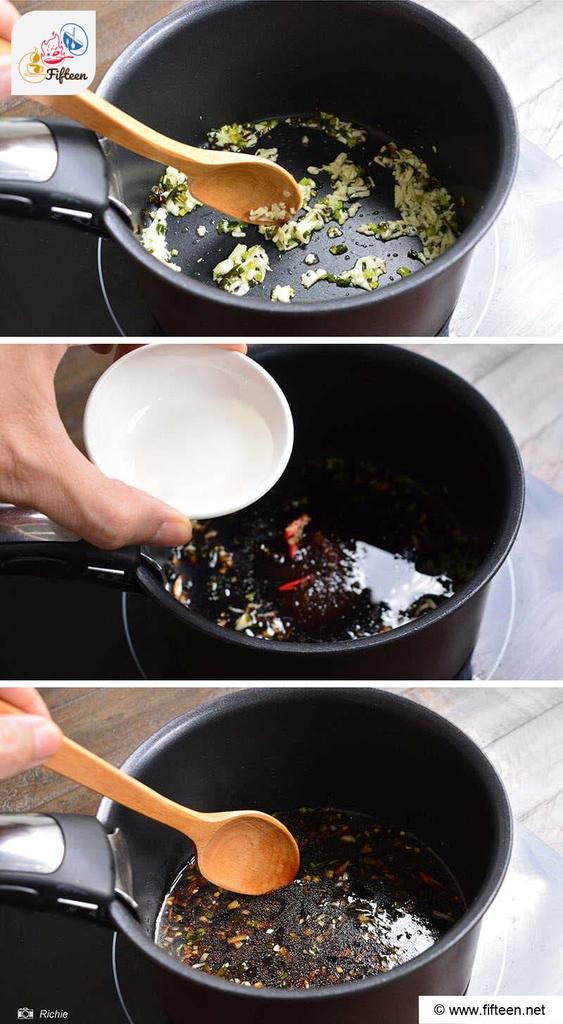
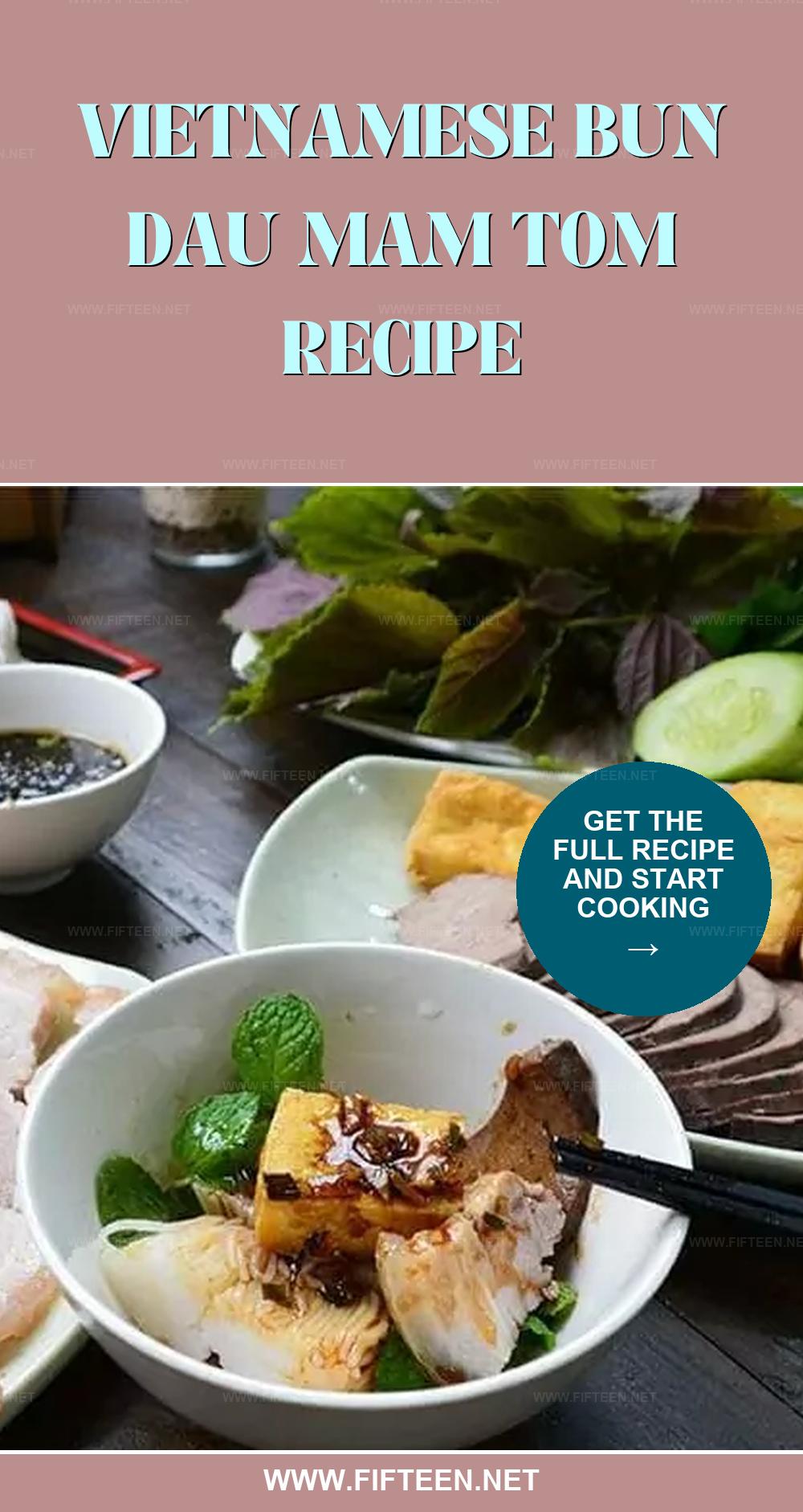
Richie
Content Writer
Expertise
Home Cooking, Meal Planning, Food Styling, Food Photography, Cooking-video Maker, Beverage Evaluation Expert
Education
Saigon Culinary Arts Centre, Ho Chi Minh City, Vietnam
Vietnam Australia Vocational School (VAAC), Hanoi, Vietnam
Richie, based in Ho Chi Minh City, Vietnam, is a dynamic Content Writer with a talent for capturing the essence of culinary art.
Richie specializes in creating visually appealing and tasty content, offering a new angle on Vietnamese and other culinary traditions. With a background in graphic design and a love for food styling and photography, he expertly combines beauty with food narratives, encouraging his audience to discover the culinary world through his imaginative perspective.